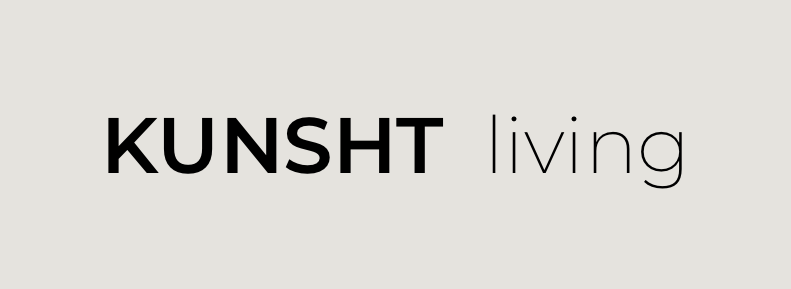Interior Design Is a Living Tool
The Neuroscience of Light, Color and Texture. How Everyday Design Choices Impact Mood and Energy
→ Harnessing Light, Color and Texture to Shape Daily Life?
In the world of design, the aesthetics of color, lighting, and texture often take center stage — but beneath the surface lies a more profound truth: our sensory environment directly affects how we think, feel, and act. Modern neuroscience confirms what ancient cultures intuitively understood — that the spaces we inhabit shape our minds.
From light intensity to the softness of a fabric, every sensory cue sends signals to the brain that influence not only our emotions but our energy levels, focus, and even decision-making. Designing our surroundings with intention is more than a luxury — it’s a form of mental hygiene.
🔆 The Science of Light: Aligning with Our Circadian Rhythms
Light plays a pivotal role in regulating our circadian rhythms—the internal clocks that dictate our sleep-wake cycles, hormone release, and energy levels. Exposure to natural light, especially in the morning, boosts alertness and mood by stimulating cortisol production. Conversely, dimmer, warmer lighting in the evening encourages melatonin release, preparing us for restful sleep. A study by the University of Toronto (2020) found that people in naturally lit spaces scored significantly higher on cognitive tasks than those in artificial lighting — and reported lower levels of anxiety.
Practical Applications:
Morning Boost: Maximize natural light exposure in the morning by opening curtains and using light-filtering window treatments.
Use cooler white light (5000K–6500K) in workspaces and home offices to support focus.
Evening Wind-Down: Incorporate dimmable, warm-toned lighting (around 2700K - 3000K) in living and bedroom areas to signal the body it's time to relax.
Smart Lighting: Consider circadian, task lighting systems that adjust color temperature throughout the day to mimic natural light patterns.
🎨 Color Psychology: Evoking Emotions Through Hues
Color doesn’t just reflect your style — it alters your physiological state. Neuroscientists have found that colour activates the limbic system, responsible for emotion and memory. Colors have profound psychological effects, influencing our emotions and behaviors. This is why certain colors calm us, while others energize or even agitate. For instance, blues and greens are known to induce calmness and reduce stress, making them ideal for bedrooms and relaxation areas. Warm colors like reds and oranges can energize and stimulate, suitable for social spaces like dining rooms.
Color Impact Examples:
Blues & greens: Lower heart rate, promote calm and stability.
Soft beiges & terracotta: Grounding and warm, ideal for communal spaces.
Yellows & oranges: Stimulate energy and conversation — great for kitchens and social zones.
Desaturated dark tones: Encourage introspection and emotional focus — ideal for reading nooks or bedrooms.
Pure bright reds: Can increase alertness but also anxiety — use with caution and intention.
According to a 2022 study from the University of Sussex, people exposed to muted green and blue environments showed increased parasympathetic activity — the “rest and digest” state of the nervous system.
Practical Applications:
Calm Retreats: Use soft blues or muted greens in bedrooms to promote tranquility.
Energetic Spaces: Incorporate warm hues in kitchens or exercise areas to boost energy and enthusiasm.
Balanced Neutrals: Employ neutral tones like beiges and greys in transitional spaces to provide balance and flexibility.
🧵 Texture and Touch: The Subtle Influencers
Tactile inputs — the textures that surround us — are one of the most underestimated elements in interior design. The somatosensory cortex (part of the brain that processes touch) plays a direct role in regulating emotions, especially in people with sensory sensitivity. Textures subtly influence our comfort and emotional state. Soft, plush textures can provide a sense of warmth and security, while smooth, hard surfaces may evoke feelings of cleanliness and order. A Japanese study (2019) showed that contact with natural textures like wood and wool can reduce cortisol levels and improve mood in under 20 minutes.
What Works:
Natural fibers (linen, wool, cotton): Regulate temperature and feel grounding.
Soft, napped finishes (velvet, bouclé): Stimulate oxytocin — the bonding hormone.
Raw surfaces (untreated wood, stone): Offer a sense of authenticity and earthy calm.
Practical Applications:
Cozy Corners: Add plush rugs, soft throws, and cushioned furniture in living areas to create inviting spaces.
Natural Elements: Incorporate materials like wood, stone, or linen to bring a sense of nature and grounding indoors.
Tactile Variety: Mix different textures to add depth and interest, catering to various sensory preferences.
✨ Design as a Tool for Life Creation
When combined — light, color, and texture create a full-spectrum sensory landscape that your nervous system responds to all day long. Rather than designing for trends, consider designing for neural regulation. You can create environments that not only look appealing but also support your mental and emotional health.
You can literally “build in” focus, rest, or motivation into your day using these tools:
Wake up with natural or circadian lighting to trigger alertness.
Start work in a room with structured colors and clean textures for clarity.
Create ritual zones with warm light and soft touchpoints to signal relaxation.
Use color zoning in open-plan areas to divide energy levels (calm vs active).
Tips for Integration:
Routine Support: Design spaces that align with your daily routines, using lighting and color to cue activities (e.g., bright, cool lighting in workspaces; warm, dim lighting in relaxation areas).
Personalization: Choose colors and textures that resonate with your personal experiences and cultural background to create a sense of belonging and comfort.
Flexibility: Incorporate adjustable elements like dimmable lights and interchangeable textiles to adapt spaces to your changing needs and moods.
You don’t need a full home renovation to start designing with the brain in mind. Even small, deliberate shifts — like changing the color of a wall, choosing a different lampshade, or adding a wool throw — send cues to your body. And those cues become rhythms. And those rhythms shape your life.
Design is not just how a space looks — it's how a space makes you feel.
